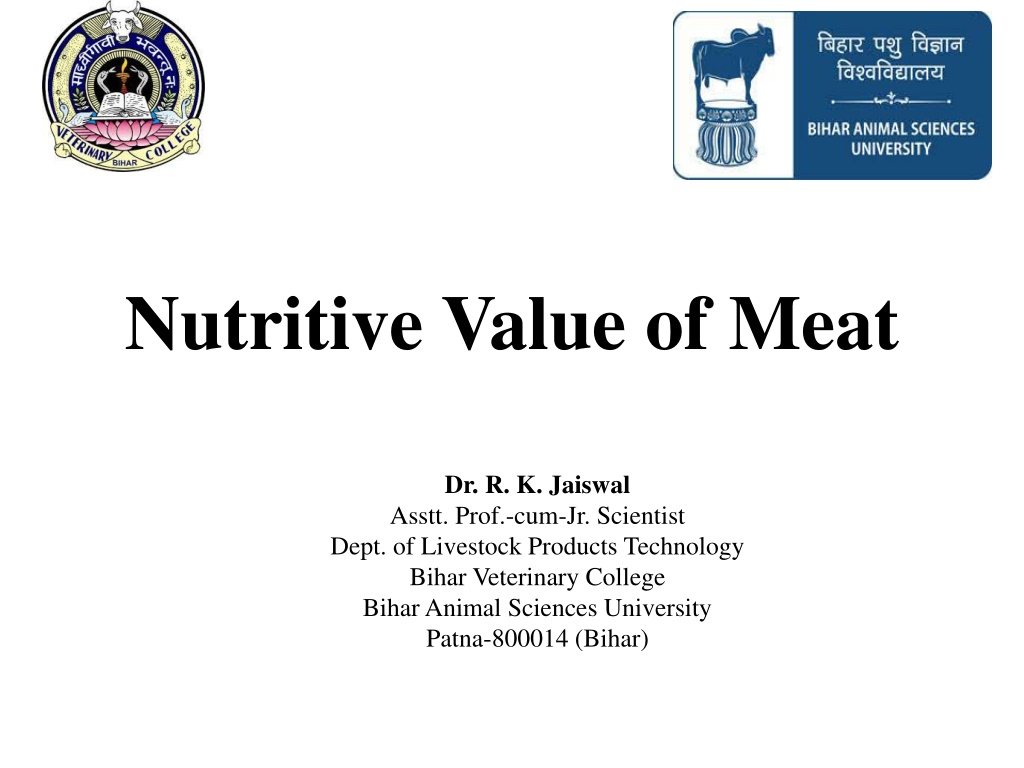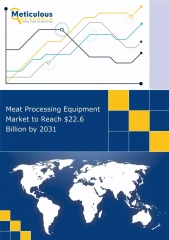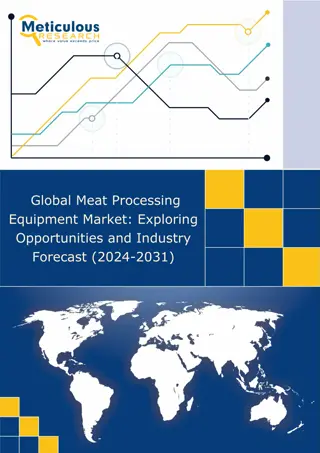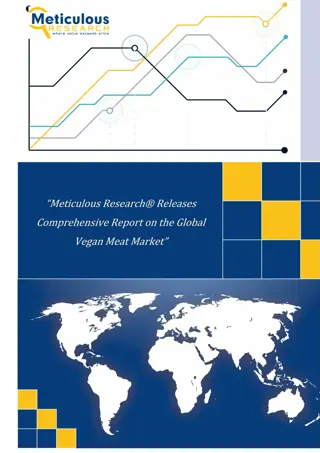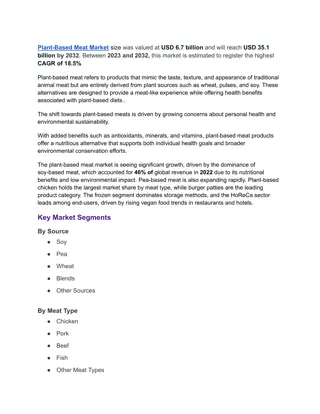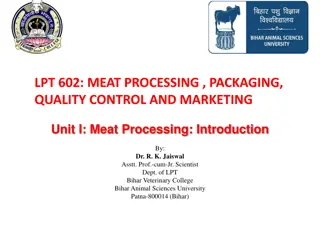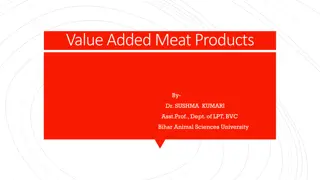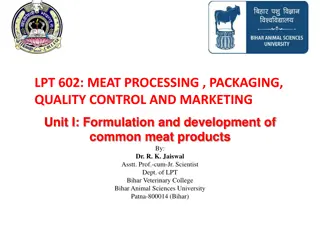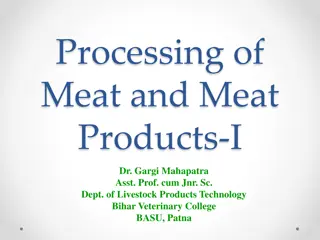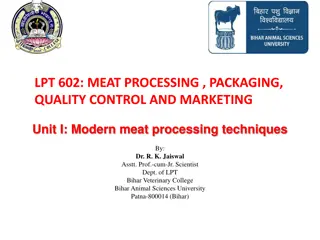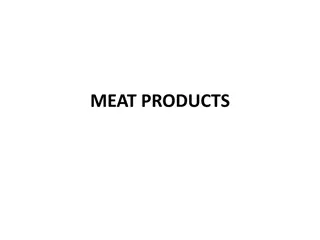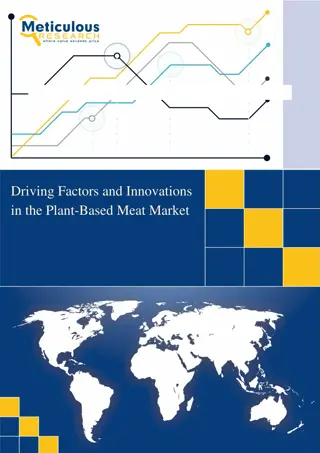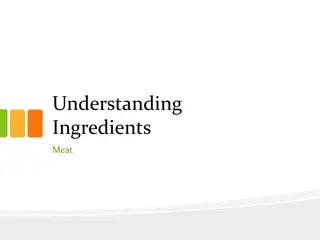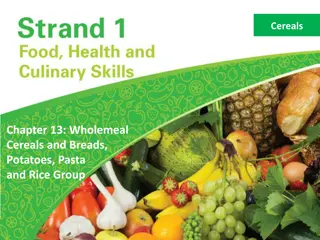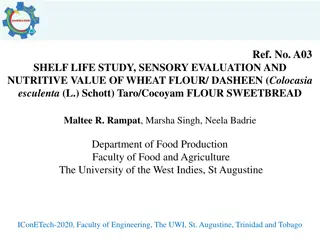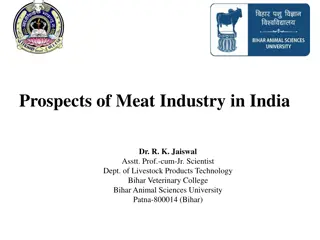Understanding the Nutritive Value of Meat: A Comprehensive Overview
Meat is a highly nutritious food, rich in high-quality proteins, essential fatty acids, minerals, and B-complex vitamins. This article delves into the proximate composition, caloric value, protein content, essential amino acids, fats, fatty acids, and mineral composition of meat, highlighting its significance in a well-rounded diet.
Download Presentation

Please find below an Image/Link to download the presentation.
The content on the website is provided AS IS for your information and personal use only. It may not be sold, licensed, or shared on other websites without obtaining consent from the author. Download presentation by click this link. If you encounter any issues during the download, it is possible that the publisher has removed the file from their server.
E N D
Presentation Transcript
Nutritive Value of Meat Dr. R. K. Jaiswal Asstt. Prof.-cum-Jr. Scientist Dept. of Livestock Products Technology Bihar Veterinary College Bihar Animal Sciences University Patna-800014 (Bihar)
Introduction Meat is very nutritious food, almost digestible. It is appealing to the eyes and pleasing to the sense of olfaction. Nutritive value of meat: high quality proteins, EFA, minerals and B- complex vitamins fully
Proximate composition and caloric value of different livestock products
Meat Proteins Meat is a concentrated source of proteins, superior to the plant proteins. Most lean meat cuts contain 16.5 to 20% proteins. Meat proteins are rich in essential amino acids. Myofibrillar and sarcoplasmic proteins are of very high quality because they contain enough of essential amino acids. Connective tissue proteins have lower levels of tryptophan and sulphur containing amino acids. Collagen is essentially poor in lysine content.
Essential amino acid as % of CP in fresh meat
Meat fats Ample amount of essential fatty acids (EFA)- intramuscular fat. Calorific value of fat in meat is attributed to fatty acids in triglycerides. Number of calories from lean meat is frequently less than those derived from equal weights of many other foods. Calorific value of particular meat depends on the amount of fat in the meat cuts.
Fatty acid in meat fat: oleic acid > palmitic acid > stearic acid. EFA in human diets are linoleic, linolenic, and arachidonic acids. Pork and organ meats are relatively good sources of linoleic and linolenic acids. Excess dietary linoleic acid is converted to arachidonic acid in human body to meet its demand. Meat fat always contains some quantity of cholesterol Organ meats have remarkable high cholesterol content as compared to skeletal meat.
Minerals Meat is a good source of all minerals except calcium. Potassium is most abundant followed by phosphorus. Meat is a good source of iron, which is required for the synthesis of haemoglobin, myoglobin, etc. Since human body has a very limited capacity to store iron, mainly in liver, it has to be a part of regular dietary intake. Meat provides this important mineral in a form that is easily absorbed in the system.
Vitamins Lean meat is an excellent source of B-complex group of vitamins. Fat-soluble vitamin found in meat is associated with body fat. Vitamin C is almost absent in lean meat, although certain organs contain it in minor quantities. Among the B-complex group of vitamins thiamine, riboflavin and niacin concentrations . are present in high
Lean pork has 5-10 times more thiamine than other meats. Several organ meats have slightly less protein and fat than skeletal meats. However, these are quite often more economical sources of protein and vitamins than retail cuts of skeletal meats. Liver is a rich source of iron, riboflavin, niacin and vitamin.
Mineral and vitamin content of raw meat (mg/100 g meat)
